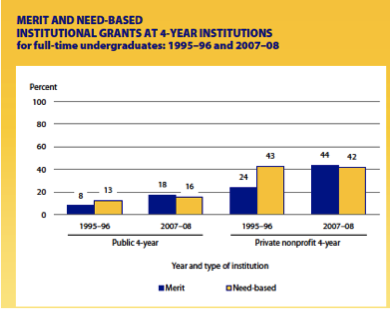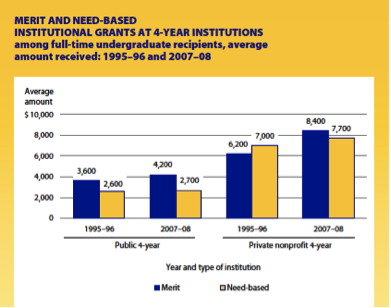Colleges are awarding more merit aid, in efforts to lure top students from both higher-ranked private schools, as well as less expensive public schools. “Many schools, eager to boost their standing or build a more diverse student body, have been ramping up their merit aid to promising applicants.” (Wall Street Journal). In particular, middle-income families who do not quality for need-based aid can benefit greatly from increased availability of merit aid.
Merit aid varies widely by college. According to the NY Times, the University of Miami offers “more than $23,000 a year to almost a quarter of its freshmen.” Other schools that award high merit aid to a significant percent of freshmen include Tulane (average merit aid of $20,500 to 33% of freshmen); USC ($18,900 average merit aid to 24% of freshmen) and George Washington University ($18,500 average merit aid to 20% of freshmen).
On the other end of the spectrum, only 1 percent of freshmen at Johns Hopkins receive merit aid. Several leading private institutions, such as the Ivies, Stanford and Amherst, adhere to a policy of offering no merit aid at all.
The increase in merit aid is controversial. Many educators believe that need-based aid should be the top financial aid priority, in order to help lower income families who would not otherwise be able to afford college.
From 1985 – 2008, “Private nonprofit 4-year institutions awarded merit aid at a higher rate than did public 4-year institutions,” and the gap is increasing. Furthermore, the average grant amount for private nonprofits was $8,400 vs. $4,200 for public institutions, according to the U.S. Department of Education.


